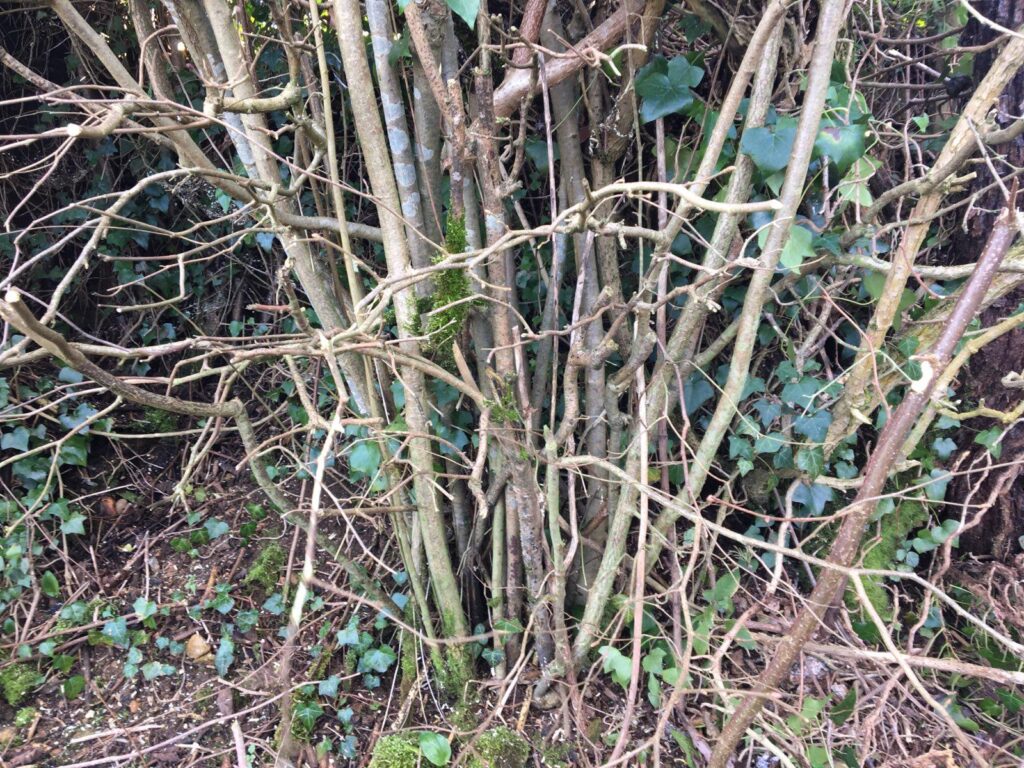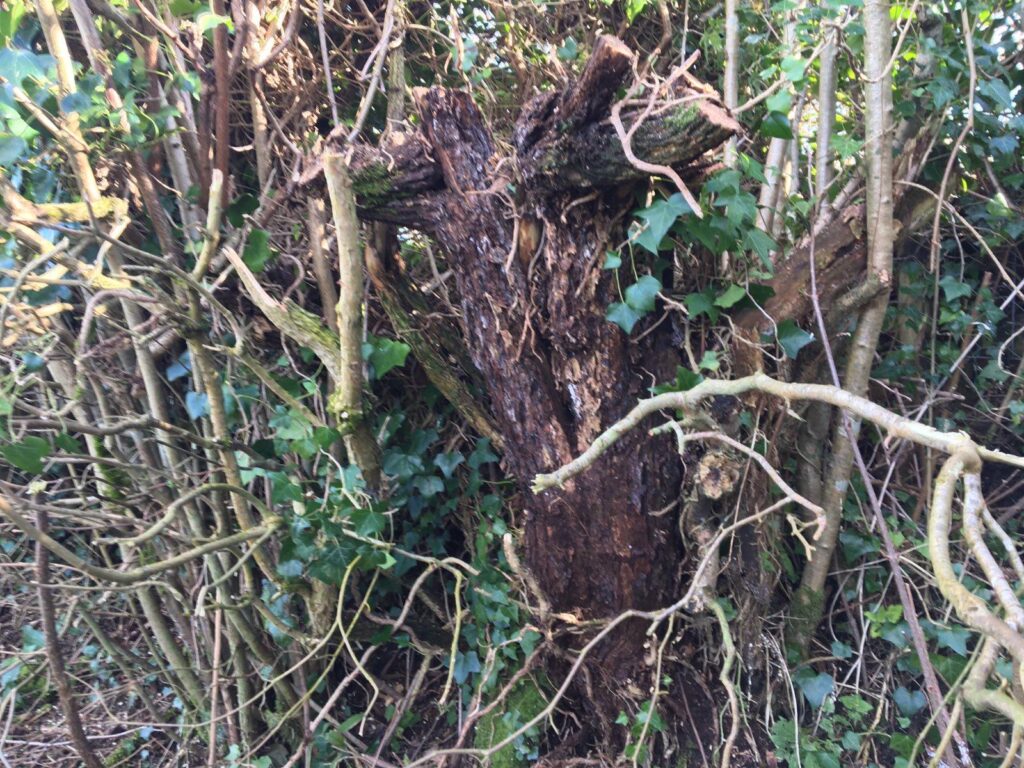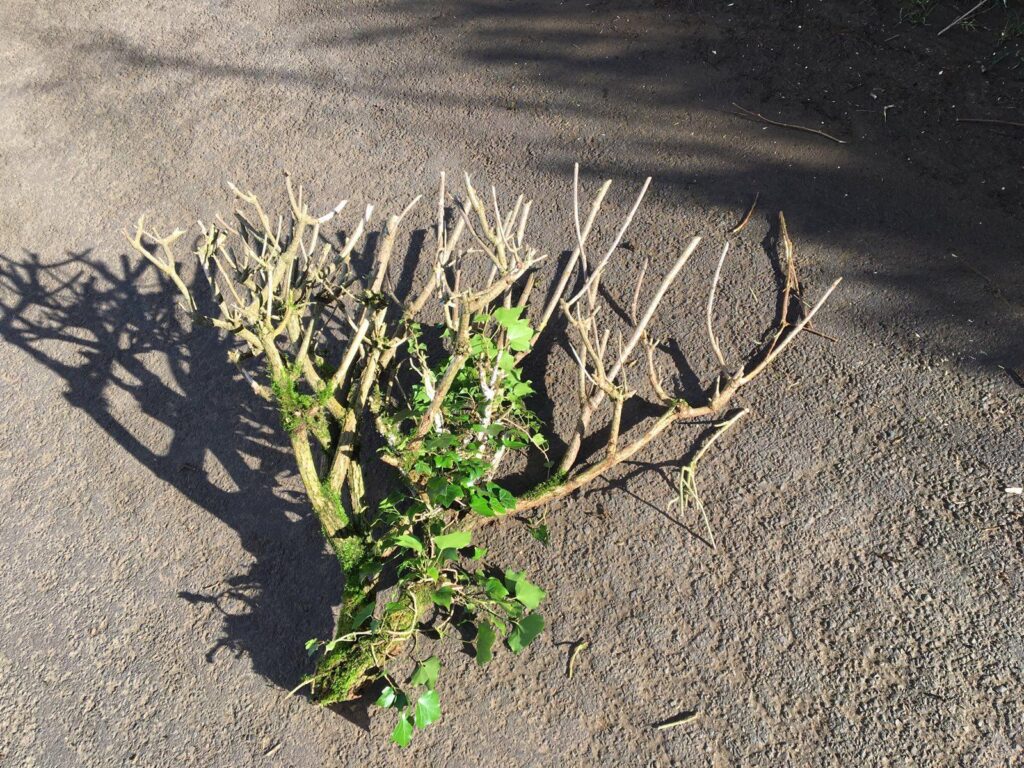Elderflower, Sambucus nigra, inevitably finds its way into a country hedge sooner or later, and it’s far from unheard of to add it to the mix at planting time.
It is suitable for growing as a hedge plant, and is desirable for its flowers and fruit that make elderflower cordial and elderberry syrup respectively.
However, judged purely as a hedge plant, it’s not a great choice because it tends to become a wide, woody trunk at the base, and then its branches aggressively spread out at the top. That’s alright in a rugged looking, single species Elder hedge, but in a mixed species hedge, that means it will push aside its neighbours and eventually ruin the hedge.
The most effective way to regenerate a country hedge is to have the whole thing laid professionally, during which process Elder is normally coppiced right down to ground level.
Even without laying the entire hedge, we can still cut the Elder right down to regenerate those sections where it has got too big for its own good.
For example, here is the base of an old hazel in a hedge: lots of stems coming up from the base, providing a decent barrier.
This slowly spreading basal growth without suckering further away is characteristic of hazel, so it coppices extremely well, and the flexible stems are also perfect for hedge laying.

Meanwhile, the Elder next to it has become a tree trunk, most of which is dead (if I had cut out all the dead stuff before taking the photo, there would have been almost nothing left to show you!). This Elder is definitely alive, and will regrow from the living parts of the stump:

And here is part of what I cut off the top: the crown of upper branches at the top quickly spreads out from a narrow main branch into a really wide canopy, much more aggressively than most other plants.

All of those problems can be managed by cutting the Elder back much harder than the rest of the hedge, forcing it to regrow from a lower point so that the new shoots fill the hole you left behind.
